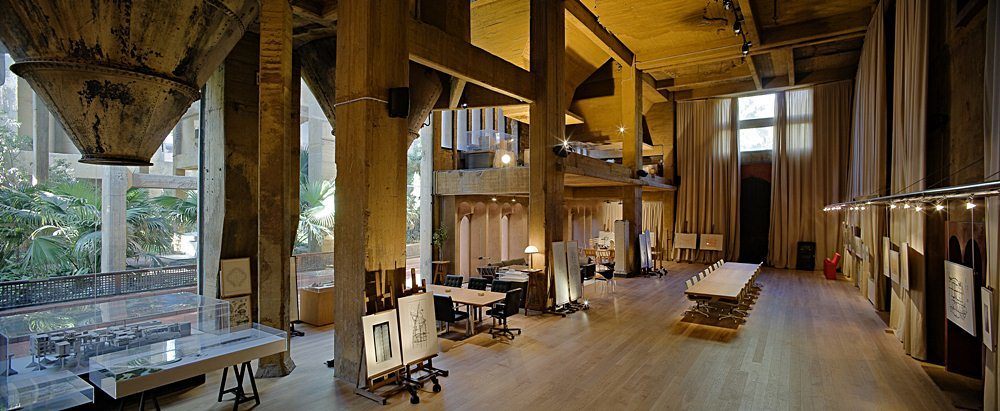
A Cement Factory Turned Into An Extraordinary Home in Spain
Share
One of the notables when it comes to having a statement house is Spanish architect, Roberto Bofill. His sense for architectural renewal is, beyond any doubt, adventurous. He turned a desolated old cement factory into a magnificent home, and the result is simply incredible.
He found the now imposing structure back in 1973. It is located at Sant Just Desvern – a town near Barcelona, Spain. The renovation of the building took two years to complete. The architect carefully weighed what needs to be maintained and what needs to demolished.
The deliberate incomplete appearance of the architecture gave it an extraordinary effect. It’s a carefully designed space with a hint of frailty. Looking at it, you can honestly concur that there is real beauty in imperfection. Ricardo Bofill renovated the industrial complex with its original state in mind. He visualized what it was like during its glory days, taking cue from the remaining elements that were left intact when he discovered the property. La Fábrica, as it came to be known, does not just serve as a home for the architect; it is also the head office of his world-renowned architecture firm, Taller de Arquitectura, which boasts of prolific creations such as the Cartier Headquarters in Saint Honoré, National Theatre of Catalonia in Barcelona, The Red Wall in Valencia, Shiseido building in Tokyo, and Les Echelles du Baroque in Paris.
The vast complex boasts of thirty original silos. Eight of which functions as a workshop, a home for his guests, a library, a model laboratory, and a concert venue, sometimes. “The Cathedral” - a huge open space filled with long conference tables, leather seats, a black grand piano, and technical illustrations is the most significant area’s in La Fábrica.
The 5,000 square meter main building has eight bedrooms, twelve bathrooms, and an original furnace from the 1920s. Ricardo Bofill’s post-modern design style echoes all throughout the space. He fused genteel materials into the existing bruteness of raw concrete and steel perfectly. The result of the union is a masterpiece that’s worthy of a place in a museum. The aftereffect is both timeless and unique.
While most would try to conceal it, he left the oxidized cement mixers exposed and untouched, as well as, the columns, voluminous ceilings, and walls. He gave emphasis to the building’s historical past and to the age that highlights mechanical artistry. In spite of that, rooms have an empyreal and metaphysical quality in them; like being in a contemporary house of worship.
Ricardo Bofill kept the place minimally accoutered despite the substantial size (both width and height) of the area. Technical illustrations and objet d'art bestrew the space.
Neutrals dominate the living room as well as the bedroom. The white sofa, white lounge chairs, white floor-to-ceiling drapes, and white floors balance the building’s naturally threadbare composition and brought softness to the area.
A combination of refined elements such as wood and leather makes it appear less stark. The addition of potted greens emboldens the interior further. The exterior is generously filled with different kinds of plants, shrubs, and trees as well. In fact, the building is heavily surrounded by it. Olive trees, eucalyptus, palms, and cypresses are a few of the resident sprouts.
And then there’s the magnificent lighting, too. It accents every possible corner, angle, and beauty of the whole space. It enhances the aesthetic appeal of the interior and set a gallery-like mood that makes it simply breathtaking.
La Fábrica is, obviously, a first-rate specimen of architectural creativity that will bring awe to anyone interested in design...and even those who are not.
All photos are sourced from Ricardo Bofill.














